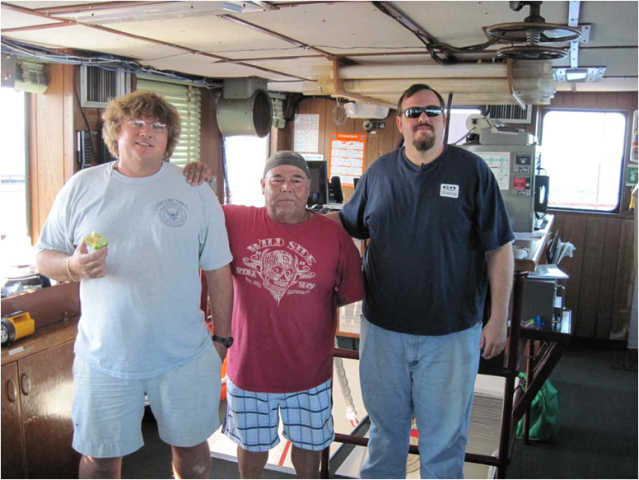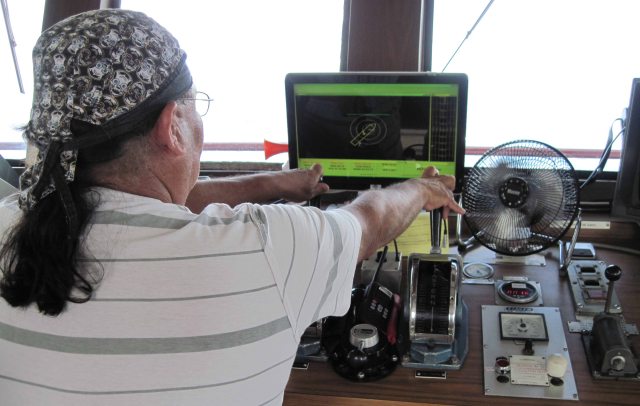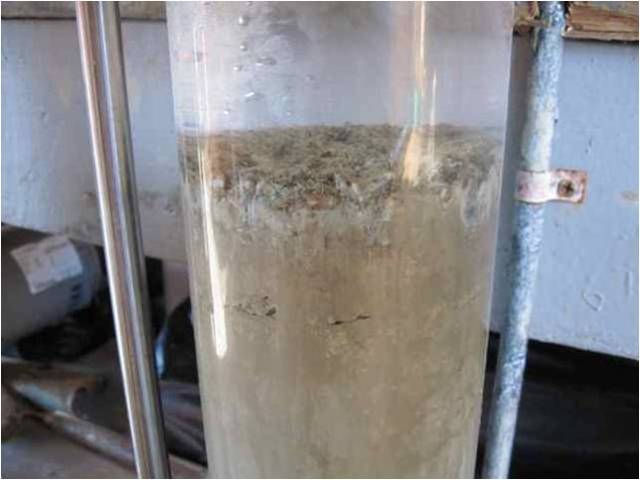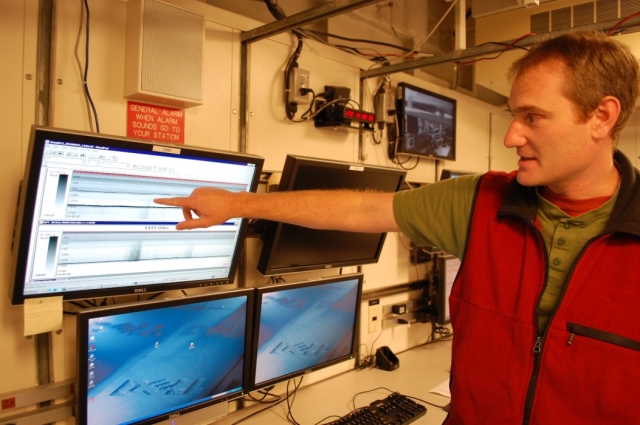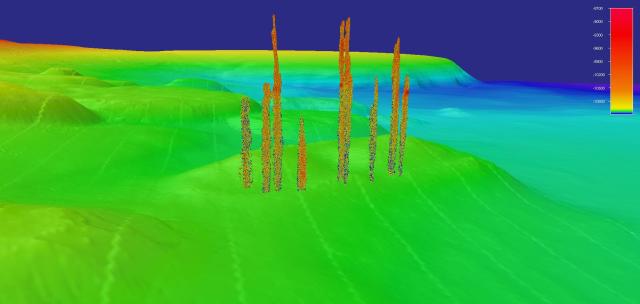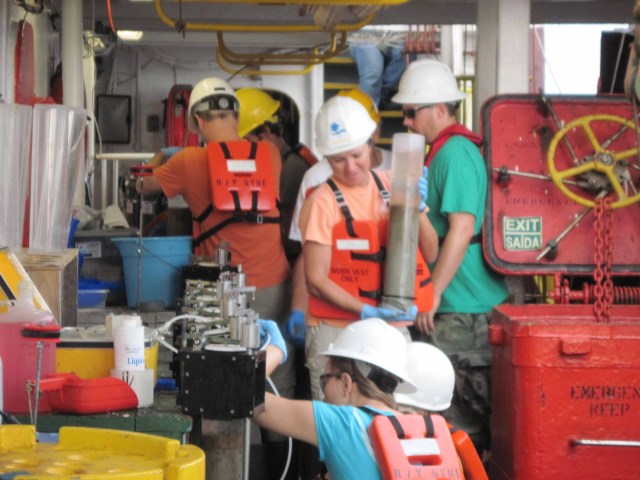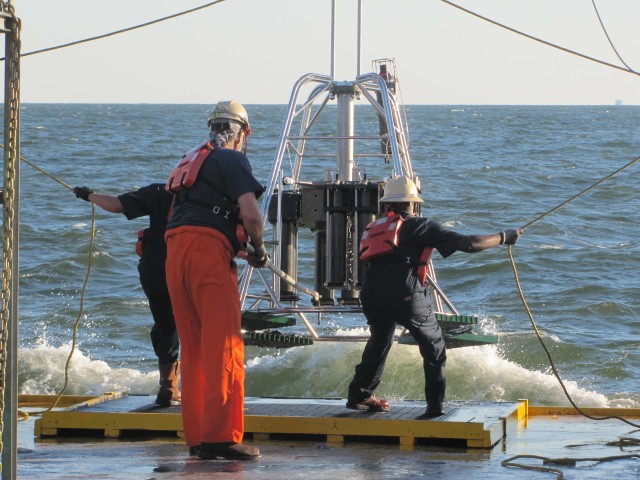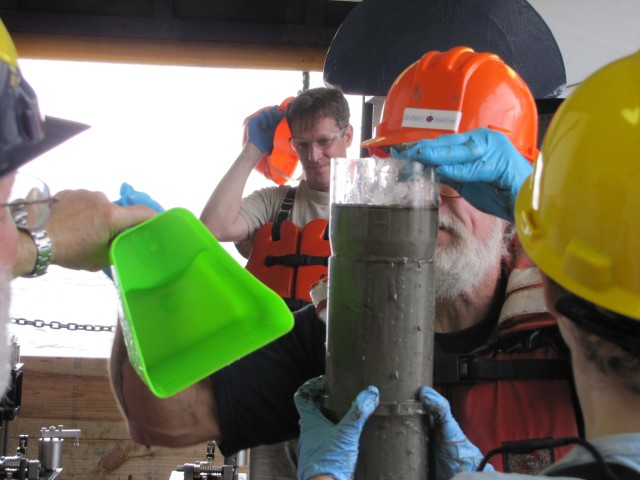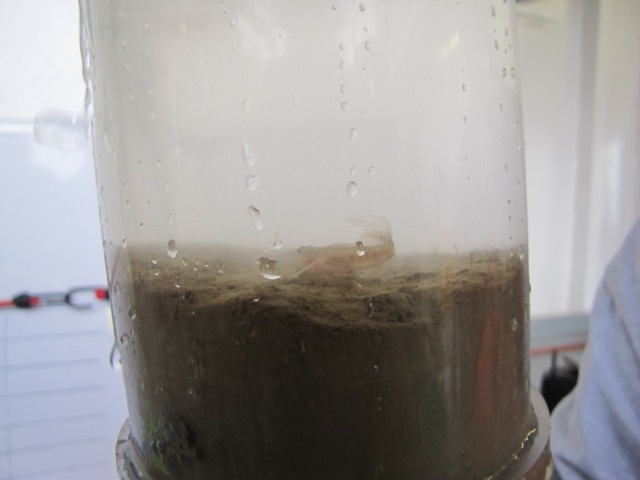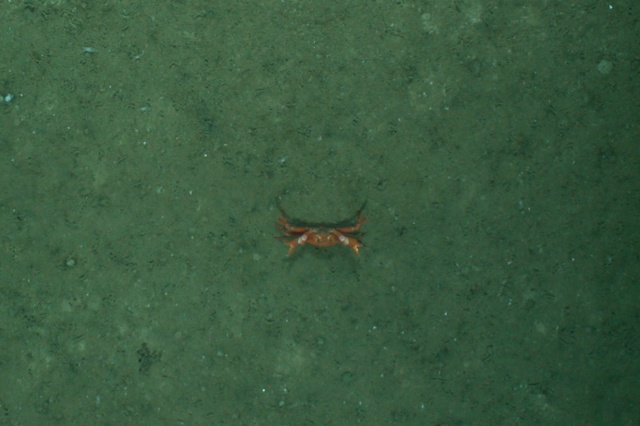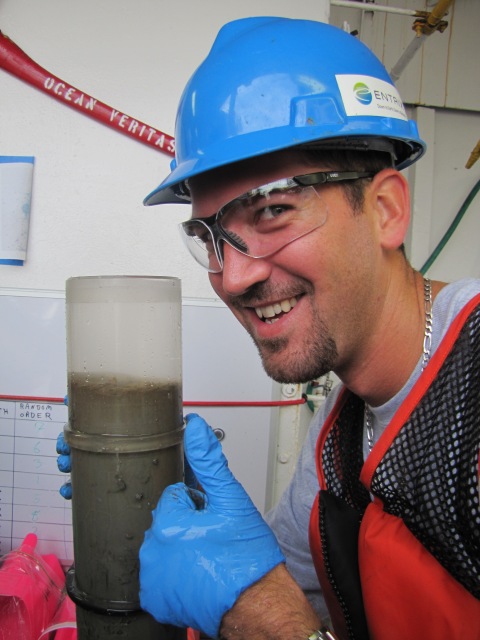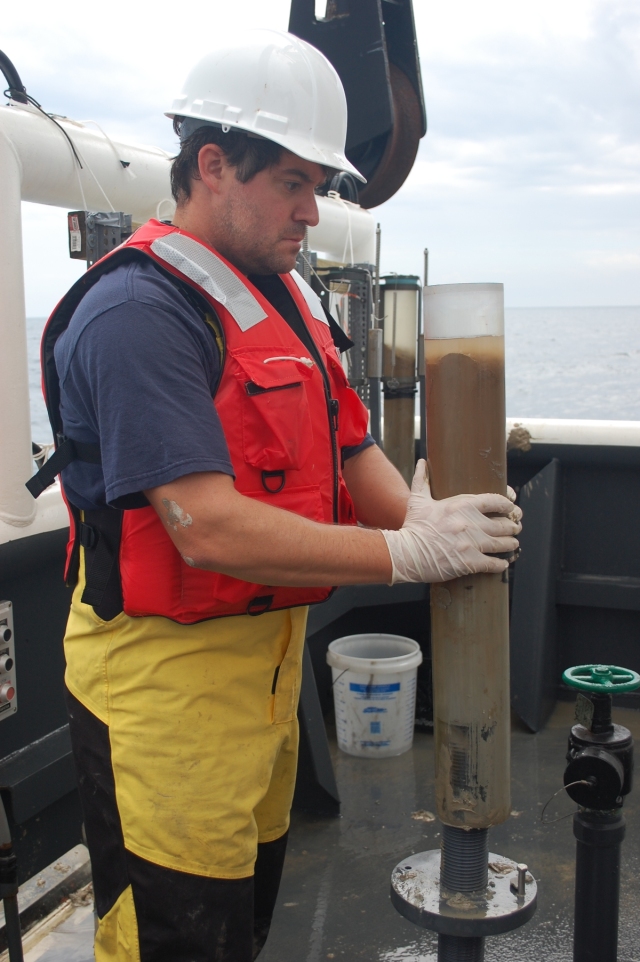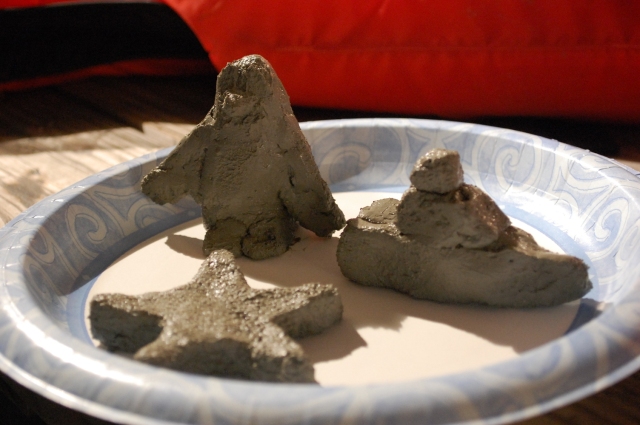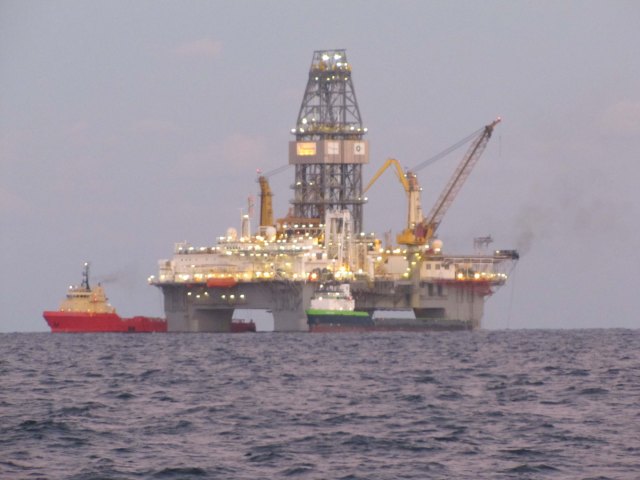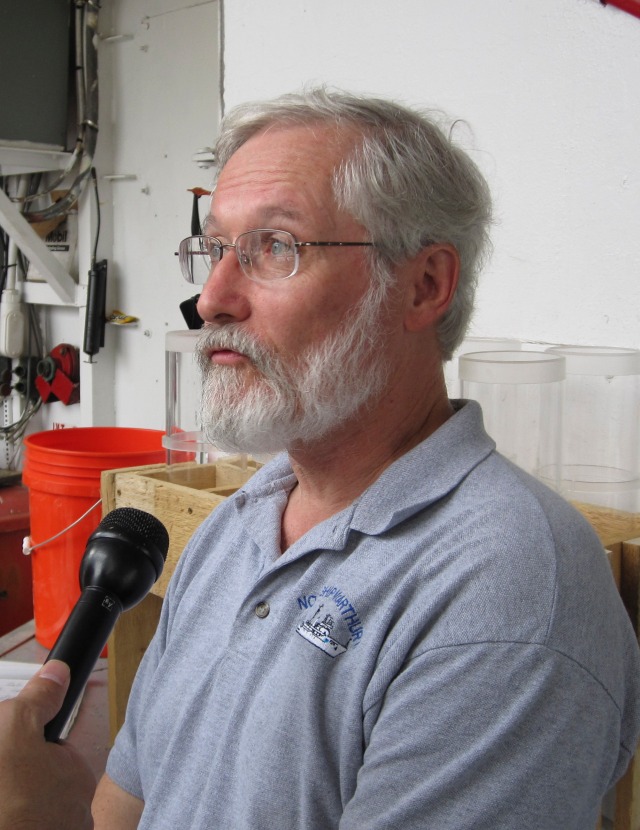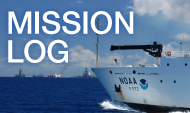Here on the Gyre we really know how to party. We spent Friday night coring sediment only about 420 meters from the well head, right in among the drilling rigs, ROV boats, standby boats, and supply boats. (Quite the wild and crazy Friday night, right? We know!)
Sampling in and among lots of other vessels can be a tricky operation for us because the Gyre is an older boat, meaning her crew members have fewer technological aids to utilize when it comes to navigating and especially steering her. For instance, most of the vessels out here are DP-enabled (dynamically positioned). Nevertheless, we are in the very capable and skilled hands of Captain Mike, Chief Mate Shorty (AKA Joe Perez), and Second Mate, Kevin Phillips. They are able to get us on-station with near-accuracy and hold us there long enough to take our samples. We were able to recover three multi-corer loads, totaling 47 cores. This is a fantastic haul.
So far, the Gyre’s science team has taken over 230 full, core tubes from 21 locations. We’re pretty proud of those numbers. The cores we are taking near the well head appear pristine and undisturbed with very little oil if any, but they are chilly when they come up as it is only about 4 degree centigrade on the sea floor. The water in the cores is pumped off the top and filtered for bacterial population analysis by Lawrence Berkeley Laboratory, and bacteriophage research by Ecolyse. The cold, cold mud is extruded and carefully sectioned off for description and various chemical analyses. We have also frozen whole cores, still in their tubes. They will go to other laboratories for a variety of research and analysis.
We also were able to deploy the underwater camera yesterday. A description and pictures of what we saw down in the deep, to come!
